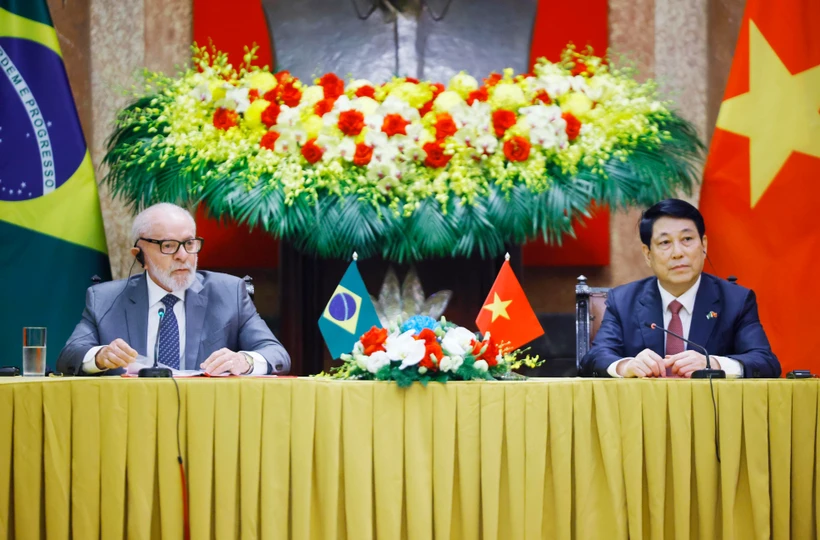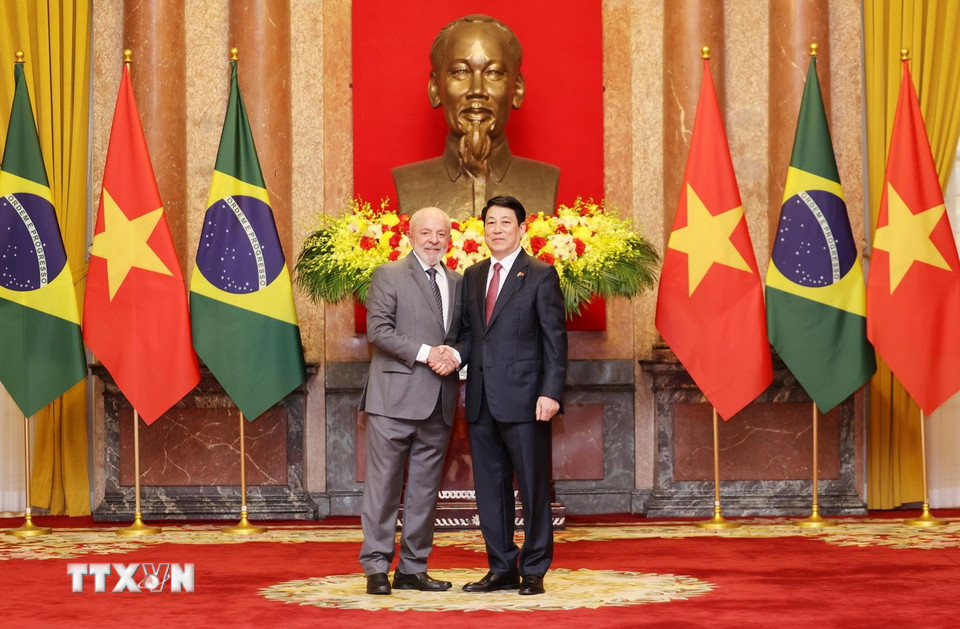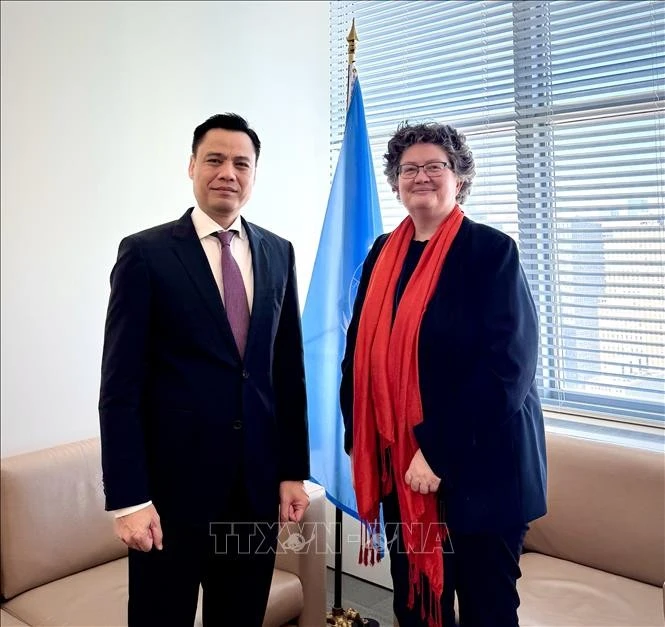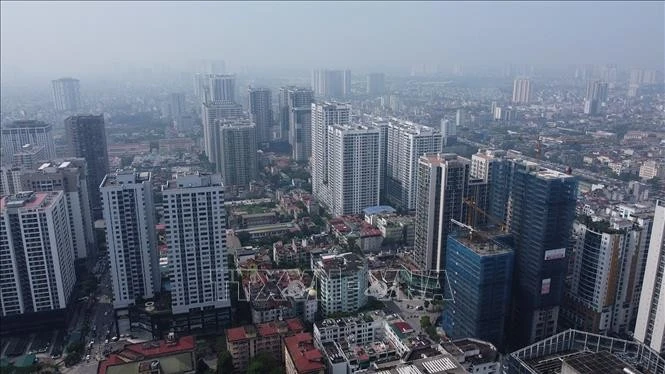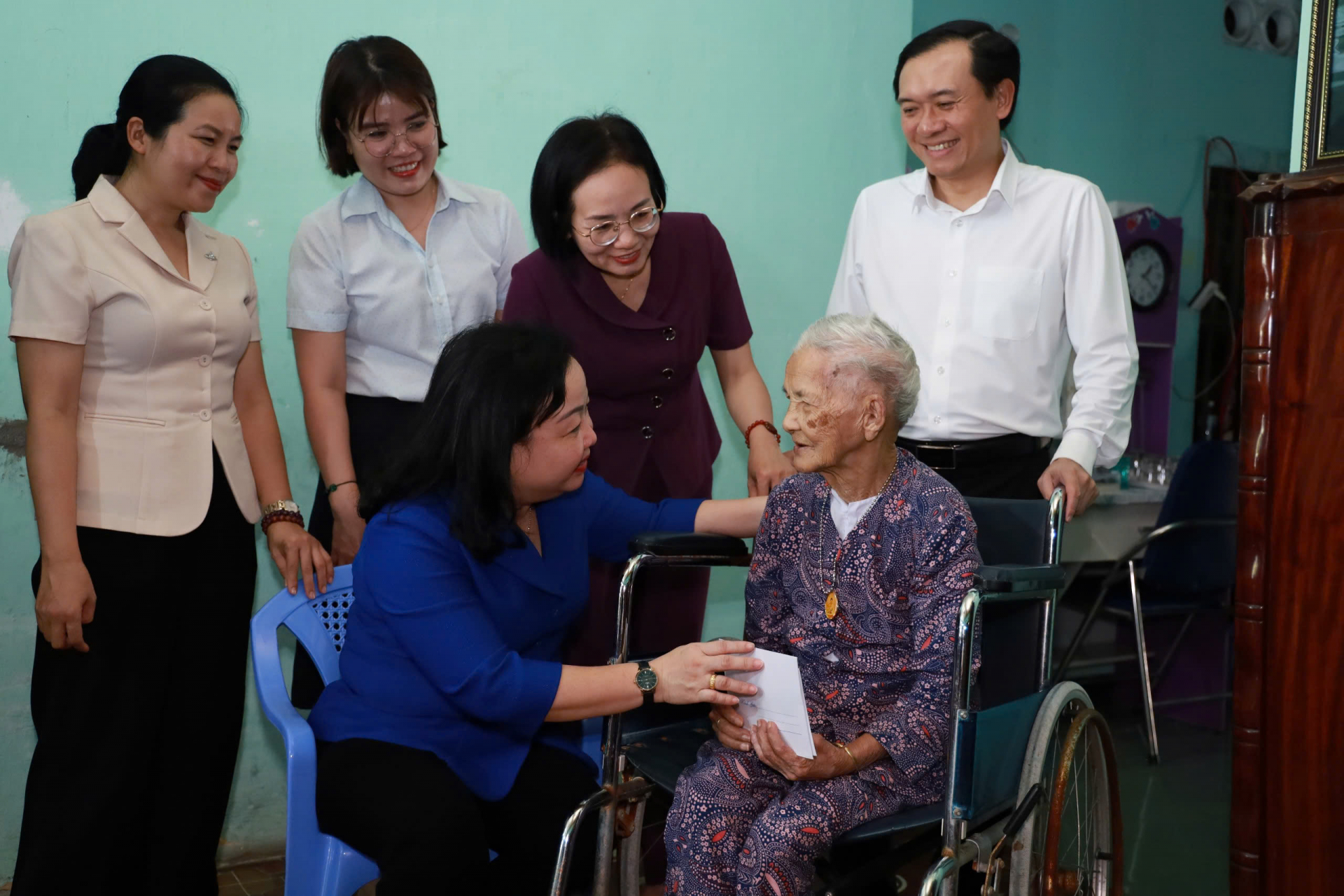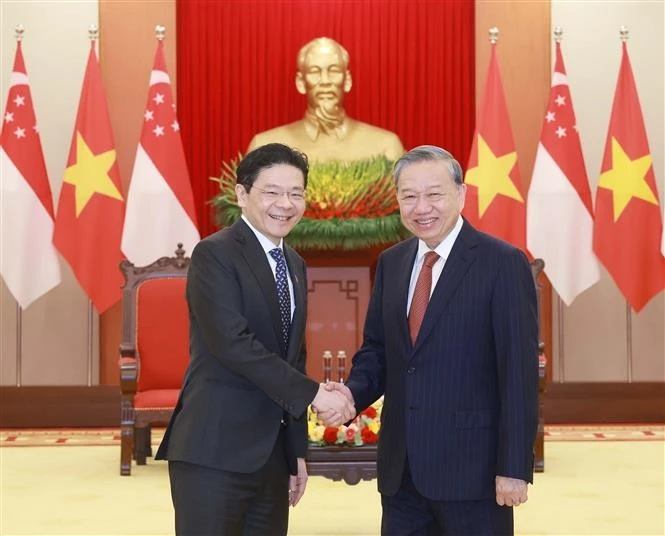The mountainous districts of Phu Yen not only boast a rich historical legacy but also hold a proud tradition as heroic revolutionary strongholds. Since liberation, the Party and the State have prioritized numerous policies aimed at investing in infrastructure, fostering economic development, and improving the livelihoods of the people, especially ethnic minorities. Looking back on 50 years of construction and development, it is evident that these districts have undergone a remarkable transformation, embracing a completely new and vibrant landscape.
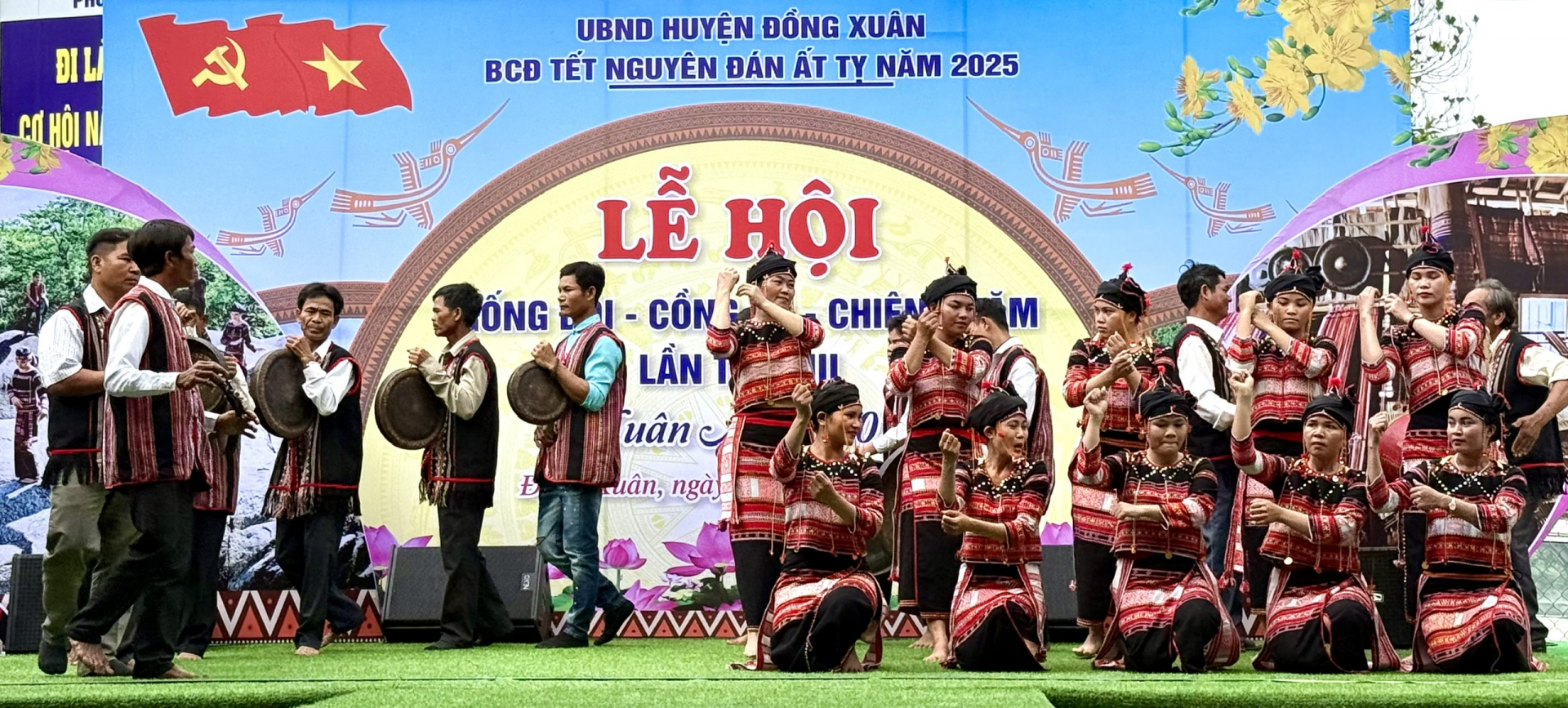 |
| The Trong Doi, Cong Ba, Chieng Nam Festival in Xi Thoai Village being held annually to preserve and promote the cultural values of the ethnic communities in Dong Xuan District |
The ethnic minority and mountainous region of Phu Yen comprises 3 districts: Dong Xuan, Son Hoa, and Song Hinh. This area is home to 32 ethnic minority groups, with a population of over 60,000 people, accounting for 6.9% of the province’s total population, primarily from the Ê Đê ethnic group…
A land with a rich historical legacy
Dong Xuan was established in 1611 and, along with Tuy Hoa, was one of the first 2 districts of Phu Yen prefecture. In 1957, the Sài Gòn administration created Song Cau District by separating it from Dong Xuan District. After 1975, Dong Xuan District merged with Song Cau District to form Dong Xuan District under Phú Khánh Province. In 1977, Dong Xuan was further merged with Tuy An District and four communes of Tây Sơn District to form Xuân An District.
In 1978, Xuân An District was divided into 2 districts: Tuy An and Dong Xuan, while 3 communes were returned to Tây Sơn District. In 1985, the Council of Ministers issued a decision to split Dong Xuan District into 2 separate districts: Dong Xuan and Song Cau, as they exist today. By 1989, Phu Yen Province was re-established from Phú Khánh Province, with Dong Xuan District officially becoming part of Phu Yen. The district now consists of 1 township and 10 communes, as it does today.
Son Hoa District was established in 1899 through the separation of 3 upland prefectures and districts: Tuy An, Tuy Hoa, and Dong Xuan, with its administrative center located in Củng Sơn Village. Due to its strategically significant location, Son Hoa served as both a defensive stronghold and a key trade gateway to Thủy Xá and Hỏa Xá during the Nguyen Lords' rule and the Nguyen Dynasty.
Over its 123-year history, Son Hoa has undergone multiple changes in both its name and administrative boundaries. These changes include the merging of Tây Nam and Son Hoa into Son Hoa, as well as the formation of Tây Sơn through the merger of Son Hoa and Miền Tây districts. On December 27, 1984, the Council of Ministers issued a decision to divide Tây Sơn District into 2 separate districts: Son Hoa and Song Hinh, as they exist today.
Through the 2 resistance wars against French colonialists and American imperialists, the mountainous districts of Phu Yen became heroic revolutionary strongholds, witnessing glorious victories by the military and local people. These districts played a crucial role in the struggle for national liberation, as well as in the efforts to build and defend the country. After gaining independence, the mountainous districts of Phu Yen faced immense challenges, with outdated and rudimentary infrastructure.
Most transportation routes were merely dirt and gravel roads, enduring year-round dust in the dry season and mud in the rainy season, often cut off by natural disasters and floods. Healthcare and education progressed slowly, facing both a shortage and a lack of qualified officials, teachers, and medical staff. Cultural facilities were underdeveloped, and the rates of hunger and poverty remained extremely high.
Mobilizing resources for mountainous regions.
With its strategic location along the East - West economic corridor and as a key area for national defense and security in the province, the mountainous districts of Phu Yen have consistently received significant attention and investment from the government and provincial authorities. Notable initiatives include Programs 134 and 135, as well as the 3 current national target programs, which have mobilized substantial resources to invest in infrastructure, support economic development, and reduce poverty for local residents. As a result, infrastructure conditions including transportation, irrigation, the national power grid, and telecommunications have continuously improved, meeting development needs and better serving both residents and businesses.
As a result, the economic structure of the mountainous districts has gradually shifted in alignment with the development trends of the province and the country. Localities have established raw material production areas, such as sugarcane, cassava, and rubber plantations, closely linked to processing industries.
Infrastructure has been steadily developing, with numerous transportation, irrigation, electricity, and water supply projects significantly enhancing the rural landscape of mountainous areas. The socio-cultural sector has also seen positive changes, with notable progress in poverty alleviation efforts. Traditional cultural values of ethnic communities have been preserved, safeguarded, and further promoted…
Comrade Nay Y Blung, Secretary of the Song Hinh District Party Committee, stated that in recent years, Song Hinh District has been prioritized for infrastructure investment. Specifically, during the 2005-2009 period, the district’s total capital investment in infrastructure construction exceeded 190 billion VND; in 2010–2014, it reached 340 billion VND; in 2015-2020, it increased to 455 billion VND; and for the 2020–2025 period, it is projected at 496 billion VND - an increase of 161% compared to 2000–2009. As a result, by 2025, 100% of households in the district will have access to the national power grid, 90% of rural households will have access to clean water, and all villages, hamlets, and residential areas will have community cultural centers.
The irrigation system has been continuously expanded and developed, now comprising 35 projects with a total length of 167 km, solidification rate is approximately 85%, ensuring irrigation for approximately 3,599 hectares of cultivated land… These investment resources have significantly improved Song Hinh District’s infrastructure, creating favorable conditions for residents to develop their economy and strive for prosperity.
The new presence
According to the People’s Committee of Dong Xuan District, with continuous efforts from various levels, sectors, and local authorities, the district has undergone a complete transformation. By 2025, the average per capita income is estimated to reach 52.5 million VND. The district has 7 communes meeting the new rural standards, including 1 commune achieving the advanced new rural standard.
The district currently has 30 OCOP-certified products rated at 3 stars. The rural poverty rate has been reduced to below 5%. There are 34 schools across all educational levels, with 73.5% meeting national standards. The healthcare network, from the district to the grassroots level, has been strengthened and expanded, with a ratio of 5.57 doctors per 10,000 people. Moreover, all 10 communes have met national healthcare standards...
Similarly, thanks to the timely and well-directed policies of the Party and the State, the lives of residents in the mountainous district of Son Hoa have truly entered a new chapter. The income of ethnic minority households has continuously improved.
In 2024, the total production value of the district reached 6.861 trillion VND, a 170-fold increase compared to 1989. The industrial and handicraft sector generated 3.849 trillion VND, significantly surpassing 1991 levels. District budget revenue reached 111 billion VND, exceeding assigned targets. The poverty rate dropped below 3%, while the average per capita income reached 43 million VND, an increase of more than 22 times compared to 1989…
Village elder Ma Lo, 82 years old, from Ma Lung Village, Ca Lui Commune, Son Hoa District, shared: “At the age of 16, I joined the army, serving in the Western District Military Command. After being discharged, I returned to my hometown and was later elected as a village elder and a respected figure in the community. I have witnessed firsthand how Ca Lui in particular, and the mountainous districts in general, have transformed day by day. 50 years after the war, thanks to the care and support of the Party and the State, Ca Lui now has fully developed infrastructure - concrete roads connecting villages to the provincial center, schools, health stations, cultural houses, and electricity for daily life. The poor receive financial support and guidance to escape poverty, the elderly are cared for with healthcare services, and children have access to education. I am deeply grateful, as these are the "fruits of labor" that the Party and the State have nurtured for the people of the mountainous regions”.



